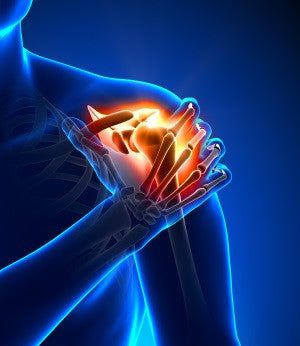Recent years have seen tremendous technological developments in the field of Pain Treatment. The field of wearable technology is also expanding quickly. Pain may be monitored and managed with gadgets like transcutaneous electrical nerve stimulation (TENS) units and smart clothes that have sensors built in. These wearables enable patients and healthcare professionals to access real-time data, enabling customized pain treatment strategies. Millions of people with a variety of pain issues now have new hope thanks to these developments, which offer more accurate, effective, and customized therapy alternatives.
Methods of Neuromodulation
By modifying nerve activity with pharmacological or electrical stimulation, neuromodulation provides focused pain alleviation for chronic pain syndromes. Important developments in this field include:
Via spinal cord stimulation devices. Which obstruct pain signals before they reach the brain. More advanced devices with numerous programming choices. Had made possible by the recent Advancements. Enabling greater customisation of pain management.
Dorsal Root Ganglion (DRG) Stimulation:
This more targeted method than regular SCS targets particular nerves linked to chronic pain. This method works especially well for pain in difficult-to-treat locations, such as the lower limbs.
Peripheral Nerve Stimulation (PNS):
PNS uses electrodes to stimulate peripheral nerves in order to reduce pain. PNS devices are now more user-friendly and less intrusive thanks to developments in wireless technology and downsizing.
Wearable Technology for Pain Management
In terms of pain management, wearable technology has advanced significantly, providing patients with non-invasive and practical solutions. Notable advancements consist of:
Transcutaneous Electrical Nerve Stimulation (TENS):
TENS equipment nowadays is small, lightweight, and frequently operated by smartphone apps.
Electroanalgesia Devices:
These wearables employ electrical currents to provide pain relief without the need for medicine. They work by transmitting low-voltage electrical currents via the skin to interrupt pain signals.
Use of Electrical Impulses
Through the use of electrical impulses, neurostimulation—which includes spinal cord stimulators and peripheral nerve stimulators—blocks signals before they reach the brain. When traditional therapies fail to alleviate chronic issues, this technology has shown promising results. Better patient outcomes have resulted from the precision and customization that neurostimulation devices have gained via developments.
Telemedicine
Particularly in light of the COVID-19 pandemic, telemedicine has emerged as an indispensable resource for management. Patients can get continuing care and professional guidance without having to see a doctor in person thanks to virtual consultations. Those who live in rural locations or have mobility challenges would especially benefit from this strategy.
Warm-Twitching Apparel:
Modern wearable heat and cold therapy devices provide continuous temperature-based alleviation for ailments like arthritis and muscular soreness.
Regenerative Health Care
Regenerative medicine has demonstrated promise in the treatment of by replacing or repairing damaged tissues:
Platelet-Rich Plasma (PRP) Therapy:
PRP therapy promotes tissue regeneration and reduces by injecting concentrated platelets from the patient’s own blood into the injured area. Improvements in PRP processing methods have increased this treatment’s effectiveness.
VR for Pain Distraction:
By transferring patients to peaceful settings, virtual reality (VR) can assist patients avoid painful medical procedures or episodes of chronic.
AR in Physical Therapy:
AR apps improve physical therapy for management by offering interactive exercises and real-time feedback..
Advances in Pharmacology
Even though technology is important, pharmacological developments keep improving pain management:
Long-Acting Analgesics:
Newer versions of painkillers with longer-lasting effects are lowering dosage requirements and enhancing patient compliance.
Machine learning and artificial intelligence (AI)
Predictive analytics and customized treatment regimens made possible by AI and machine learning are revolutionizing the field of pain management:
AI-powered solutions for assessment can evaluate patient data to determine the degree of discomfort and forecast the course of treatment, assisting medical professionals in making well-informed decisions.
Customized Treatment Plans:
By analyzing vast datasets, machine learning algorithms are able to spot trends and make recommendations for individualized management plans that will increase patient satisfaction and treatment effectiveness. The future of management is bright as technology keeps developing.
Telehealth and Remote Monitoring:
AI-powered telehealth systems facilitate remote pain management, enabling patients to have ongoing care and supervision while lounging in their own homes.
In summary
These advancements in pain management are offering more efficient, customized, and non-invasive solutions.In general, advances in management technology are giving patients access to more accessible, individualized, and effective treatments, opening the door to a time when chronic pain will be easier to manage and patients will be able to lead happier, more fulfilled lives. These range from wearable technology and neuromodulation techniques to regenerative medicine and AI-driven tools. With even bigger advancements possibly in the works, the future of management is bright as technology keeps developing.



More Stories
Everything You Need To Know About Luminex Elisa Multiplex
Ultimate Guide to Lasting Touch Gel
Residential Apartments for Comfortable Living